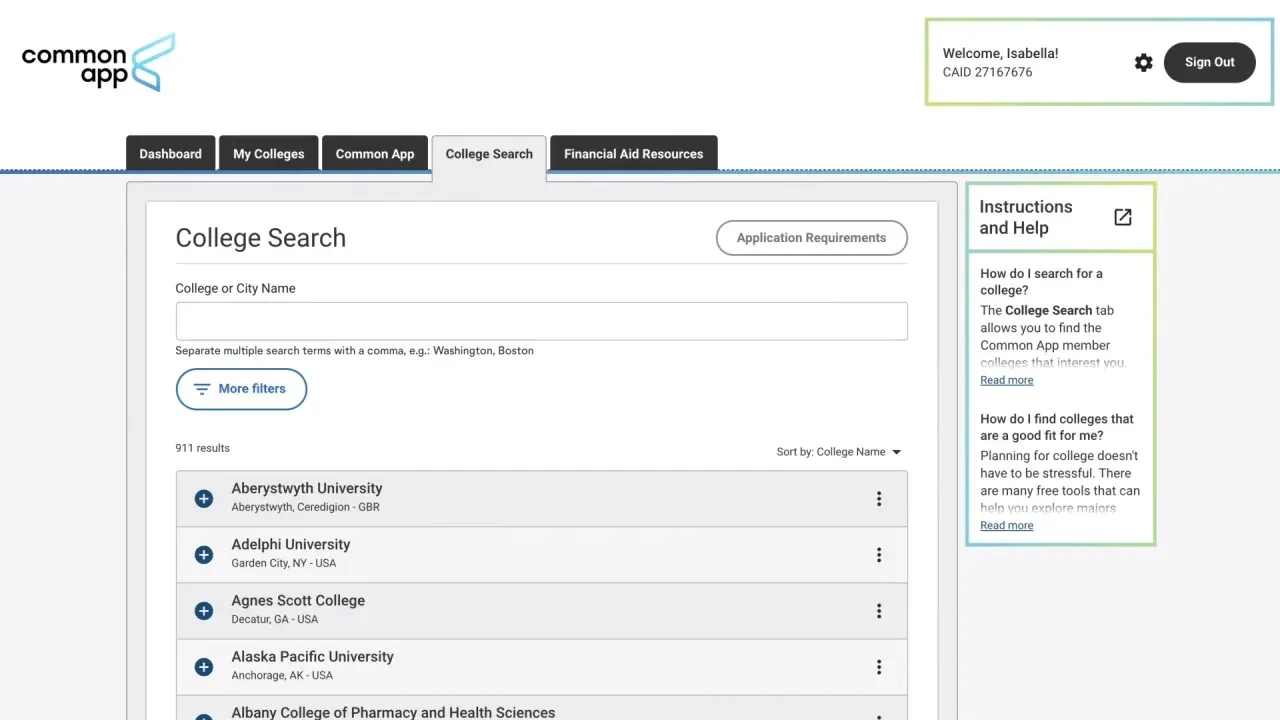This page is licensed under Creative Commons under Attribution 4.0 International. Anyone can share content from this page, with attribution and link to College MatchPoint requested.
What Parents Need to Know About the 2025 Changes to the Common App
For many families, the Common Application marks the beginning of a high-stakes journey—the college admissions process. And while the platform has long promised to make applying to college more streamlined, the truth is that navigating it can still feel overwhelming, especially when things change. This year, there are several important updates coming to the Common App that parents of rising seniors should know about. Some will make the process easier and more intuitive for students. Others may catch families off guard if they aren’t paying close attention. Here’s what’s changing—and what it means for your teen.

A New Look: More Intuitive and Mobile-Friendly
The biggest change is the Common App’s new interface, launching in August 2025. Instead of the traditional tabs running across the top of the page, the platform will now feature a left-hand navigation panel. This design is not just cosmetic—it’s built to help students better understand where they are in the application and what still needs to be completed.
This update is especially helpful for students working on phones. While we always recommend using a computer when possible, we also know many teens chip away at college applications between classes, on bus rides, or from their phones during downtime. The more mobile-friendly design will support those students and reduce common errors tied to screen size and layout.
Easier to Track Progress
In the updated My Colleges section, students will see clear indicators of submission status for each application. In one quick scan, they’ll be able to tell which applications are ready to go and which ones still need work. For parents trying to keep tabs on progress (without nagging), this update will be a welcome one.
There’s also a redesigned Financial Aid section. Students will now see potential scholarship matches, making it easier to identify need- and merit-based opportunities offered by participating colleges. While this section won’t replace a full financial aid strategy, it does make key information more accessible.
Important Dates: The Application Will Shut Down Temporarily
If your teen has already started working on their Common App this summer, make sure they’re aware that the system will shut down on July 28 for updates. After that, the new version goes live in early August. The good news is that most account information will roll over—things like your teen’s profile, test scores, and activities.
However, not everything will carry over, and this is where many students make mistakes. Here’s what won’t roll over:
- Responses to any college-specific questions that have been changed or removed
- Any scholarship matches or direct admission offers
- FERPA releases
- Recommender invitations made outside of a school platform
If your student has already started college-specific sections or invited recommenders, they’ll need to double-check those items after the new application opens.
New and Updated Questions
There are a few key changes to the questions students will answer:
- Additional Information: This optional section now has a 300-word limit, down from 650. While students can still share essential context (like health challenges or learning differences), they’ll need to be more concise.
- COVID-19 Question: This has evolved into a broader “Challenges and Circumstances” question, with the same 250-word limit. Students can now reflect on any life experiences that shaped their journey—not just pandemic-related disruptions.
- Student Context Inventory: After a three-year pilot, this question is being formally added to the application. It asks students to check off things like household responsibilities, work hours, or family obligations that take up four or more hours per week. It will appear in the Activities section and can help admissions officers better understand a student’s daily life outside of school.
- Citizenship Question: This section has been updated with clearer language and additional options to help students select the choice that best matches their circumstances.
- ACT Scores: Students will now be able to choose whether to self-report their ACT Science and Writing scores. As always, we recommend students check individual college policies to understand which test sections are required.
Clarifying Self-Reported Grades and Transcripts
One of the most confusing parts of the Common App—reporting courses and grades—is getting a little clearer this year. The new FAQs will highlight which colleges use the Common App’s “Courses and Grades” section and which use an external system called STARS. If your teen applies to one of these colleges, they’ll now see more guidance within the application.
Recommendation Process: Watch for School Integration
If your teen’s school uses a system like Naviance, SCOIR, or another Common App partner, their ability to invite recommenders directly through the Common App may be disabled. In that case, students will be prompted to manage recommendations through their school’s system. This should reduce confusion in the long run—but only if students and parents are aware of how their school handles the process.
Direct Admission and Community Colleges
The Common App’s Direct Admission initiative is expanding. This fall, offers will go out in September to eligible students—primarily first-generation and low- to middle-income applicants. These offers will include waived fees and are available to students with permanent U.S. addresses. While Colorado students must opt in, students in other states are automatically considered based on their profile. It’s a small program, but it’s growing and can be a great opportunity for students who are unsure of their options.


